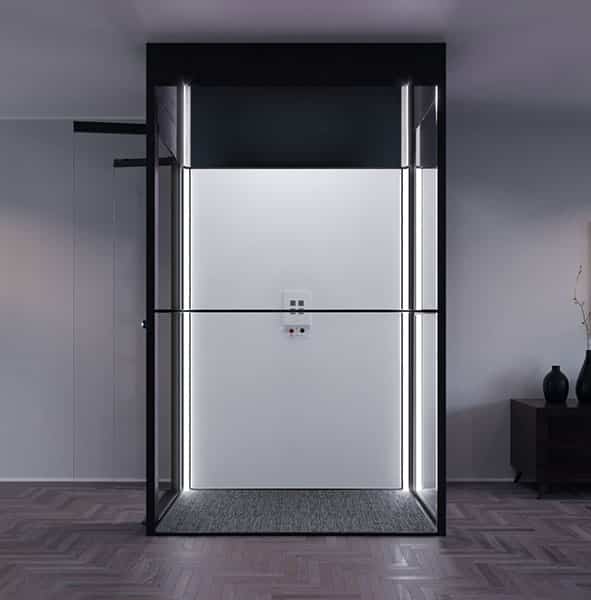What is the Cost of Installing a Lift?
If you’re considering adding a home elevator, understanding the cost of installing a lift in house is one of the first steps. Installing a lift is a significant investment that improves accessibility, convenience, and property value. Residential lifts are generally more affordable than commercial systems, but prices vary based on the type of elevator, features, and your home’s structural requirements.
Price of a SWIFT Home Lift
SWIFT home lifts start at approximately $10,000, while more advanced models, with higher weight capacities, multiple doors, or luxury finishes, can cost upwards of $25,000 or more. Options like SWIFT Lite and SWIFT Pro allow homeowners to choose between standard and premium configurations.

Factors Affecting Lift Installation Cost
Several factors influence the total lift installation cost, including lift type, design options, number of floors, and additional safety features.
1. Types of Elevators
- Hydraulic Lifts: Operate via a piston and hydraulic fluid.
- Pros: Affordable, reliable for low-rise buildings.
- Cons: Requires an oil tank and careful maintenance.
- Traction Lifts: Use ropes and counterweights powered by an electric motor.
- Pros: Suitable for multi-floor homes, faster speed, higher capacity.
- Cons: Expensive and needs more installation space.
- Pneumatic Vacuum Lifts: Move by creating air pressure differences inside a sealed tube.
- Pros: Space-saving, eco-friendly, perfect for 2–3 floors.
- Cons: Limited load and may be noisier than other lifts.
- Screw-Driven Lifts: Use a rotating screw and nut mechanism.
- Pros: Compact, quiet, energy-efficient, suitable for 2–6 floors.
- Cons: Not ideal for tall buildings or heavy traffic.
2. Design Choices Impacting Cost
- Lift Size and Capacity: Larger lifts for more passengers or wheelchair access cost more. Compact 2-person lifts are ideal for smaller homes.
- Door Options: Automatic doors or premium glass/saloon-style doors increase the price.
- Interior Finishes: Custom finishes such as wood panels, designer lighting, or colored glass add to the total cost.
3. Number of Floors
- Each additional floor increases equipment, installation work, and cost.
- High ceilings or unique layouts may require adjustments, adding expenses.
4. Safety and Security Features
Modern home elevators may include:
- Emergency brakes
- Battery backup
- Intercom systems
- Keycard access
These features ensure safety but can increase the overall cost depending on customization.

Tips for Affordable Lift Installation
- Understand Your Needs: Determine the number of floors, weight capacity, essential features, and usage frequency before choosing a lift.
- Focus on Essentials: Avoid paying for unnecessary luxury add-ons.
- Flooring Options: Flooring materials like tile, carpet, or hardwood can influence the final cost.
- Compact Designs: Consider platform or screw-driven lifts for minimal structural work and space-saving installation.
Conclusion
The cost of installing a lift in a house depends on type, size, features, and home layout. By understanding your needs and evaluating home lift installation options, you can choose a solution that balances convenience, design, and budget. Brands like SWIFT offer a range of lifts, from practical and compact models to luxury, customizable home elevators.










